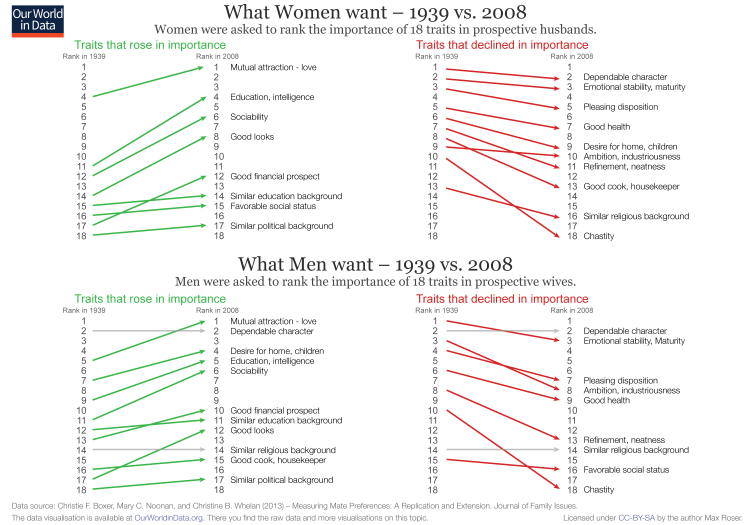We know a lot about how income and health have changed, but less about the evolution of norms and values. One reason for that is that it is more straightforward to measure health-related aspects (like child mortality or life expectancy) or income measures (like GDP, income inequality or poverty).
A rare opportunity to see how values have changed in the US was discovered by Boxer et al (reference below) who compared surveys in which people were asked what they seek in a spouse. I took the first and last survey results reported by the authors and visualized it in the chart below: It allows us to compare the relative importance of these traits in 1939 and seven decades later. The big winner is ‘mutual attraction – love’ which now ranks as the most important aspect for both women and men. But also ‘Education, intelligence’ and ‘Sociability’ rose in importance. The relative losers are ‘Good Health’ and at the very bottom ‘Chastity’.

The data are from Christie F. Boxer, Mary C. Noonan, and Christine B. Whelan (2013) – Measuring Mate Preferences: A Replication and Extension. Journal of Family Issues May 30, 2013. doi: 10.1177/0192513X13490404. Online here.